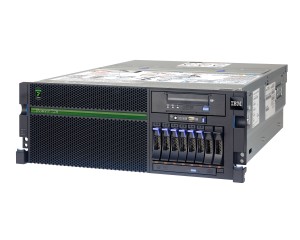by Timothy Prickett Morgan, IT Jungle
If you are using an old PowerPC, Power4, Power5, or Power5+ system, you have no doubt long since paid for the machine. And I would even go so far as to guess that you have created your own applications to run on OS/400 or i5/OS–and perhaps even IBM i–on these old machines, or maybe you have some third-party apps that do what you tell them to and, more importantly, don’t do things you don’t tell them to do, like crash all the time.
So with the economy not exactly exuding exuberance, rational or any other kind, you are probably feeling a bit smug right now. Your AS/400e or iSeries or System i machine does its job and doesn’t cost you much money. Until you do the math, that is, at least according to the way that IBM does it.
I was fishing around on the IBM Website and came across the Move Up To IBM Power Systems area that shows the monthly operational costs of keeping a vintage entry or midrange machine around and contrasts that with moving up to a new Power7-based entry Power 720 model. IBM’s analysis is a bit simplistic, of course, but it is an example of the kind of comparisons that you can gin up for yourself if you are not feeling so smug about the old iron and software you are using in your data center and want to get a new system.
IBM’s comparisons just stack up the cost of software maintenance, hardware maintenance, and power on a monthly basis for these old machines against software maintenance and a monthly lease for a new Power 720 Express. I presume the costs on the Power 720 are for a machine with one core activated running either IBM i 6.1 or IBM i 7.1, but Big Blue doesn’t say. (You can infer it from the 5,950 CPW performance rating in the comparison, since a four-core Power 720 is rated at 23,800 CPWs.)




 ACARDIA LIMITED 12th Floor, Ocean House, The Ring, Bracknell, Berkshire RG12 1AX. United Kingdom.
ACARDIA LIMITED 12th Floor, Ocean House, The Ring, Bracknell, Berkshire RG12 1AX. United Kingdom.



Analyst: Linux Will Eat Oracle Solaris’ Lunch in 2012
Linux is a very good and stable OS and I do believe this will grow market share not just in 2012 but moving forward. However AIX and Solaris are proven environments for Enterprise computing. For systems with less than 4 CPU’s there is very little to choose between AIX / Solaris and Linux (apart from the >10000 certified Unix applications) but when customers need an OS which can offer scalability to more than 1000 CPU’s (or Cores) then AIX or Solaris become the only choice. You may think than no-one will need that may CPU’s but if you reflect on AMD now offering 16 core CPU’s and Intel working on CPU’s with more than 100 cores then this level of scalability is not just a feature but a requirement.
Java pbalorby is worthy of its own bullet point Java, MySQL and maybe Solaris are why Oracle is doing the deal. Owning Java helps Oracle’s middleware and tools businesses and competes directly with .NET on the server in the enterprise. Java is less relevant when you get to the web.- Charles